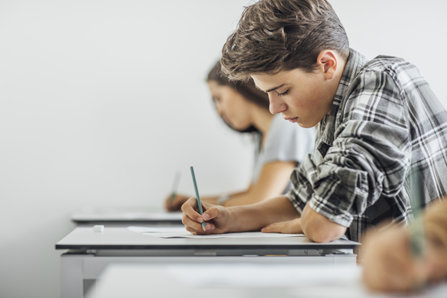How Recovery High Schools Help Teens Launch Sober Adult Lives

It’s a regrettable fact that the world of drug rehabilitation seems better established for adults than it is for youth. There are some rehabs for teens around the country, but what happens when the young person finishes rehab and goes home? Compared to youth still living at home, it’s relatively easy for an adult to get a different job or move to a new neighborhood or even a new town. They can also stop going to places where they might meet their old drug-using “friends.” But for a teen newly out of rehab, it’s not so easy.
The vast majority of youth are going to return home to their families, hang out in the same neighborhoods and attend the same schools they were in before they went through rehab. The chances are very high, therefore that they will be forced to associate with the same drug-using friends and even the school’s drug dealers. It’s truly a dilemma any of us can empathize with.
Giving these youth a better chance at lasting recovery is why recovery high schools were founded. These schools are peppered around the country and serve the needs of youth who need a safe and supportive environment while they gain stability as newly-sober individuals. Many of these students also need special educational programs to help them catch up on studies missed during the years they were impaired by drugs or alcohol. For these kids, the opportunity to attend a recovery high school is a godsend.
What are Recovery High Schools?
There are about 40 of these schools located in 15 states. On average, they have 32 students enrolled at any point in time. California and Texas have the highest number of these schools, with several in Massachusetts and Minnesota. Some are private schools, some are alternative schools and some are charter schools. They are accredited schools capable of offering high school graduation certificates. The non-profit group Association of Recovery High Schools guides and educates those wishing to establish these schools in their communities.
In these classrooms, students have a chance to catch up on academics, with some taught by the school’s teachers and others completed through online curriculums. Students can also meet with counselors and attend support or Twelve Step meetings.
Perhaps the most important feature of this school is that it is dedicated to the special needs of these individuals. The entire purpose of the school environment is the support of student sobriety which is a marked contrast the atmosphere of too many conventional schools.
A 2017 survey revealed that 20% of 9th- through 12th-grade students had been offered drugs on school grounds. The state with the highest rate of on-campus drug or alcohol use was Louisiana, with 29% of the state’s high school students admitting to on-campus drug use and 30% saying they had consumed alcohol at school.
Better Hope for Success in Academics and Life

With their very small student bodies and devotion to recovery, it’s possible for these schools to help their students leave their drug-using days and associates far behind. Here, students have pledged themselves to remaining drug-free so they can have a better chance of completing their high school requirements. A 2016 study from the RAND Corporation found that middle and high school students who used alcohol or marijuana manifested poorer academic performance and mental health than sober students. Some drug- or alcohol-using students also experienced poorer physical health.
Among college-bound students in conventional high schools, there is also the competitive pressure to gain acceptance to college and compete for scholarships. This pressure drives between five and nine percent of middle and high school students to misuse prescription stimulants like Ritalin and Adderall to help them focus on their studies longer than they normally would. At a recovery high school, the emphasis is on the well-being and progress of each individual, not the pressure to achieve.
A professor at Vanderbilt University writing a book about recovery high schools summed up the need for these schools by saying, “If kids can’t find new peer groups, it’s going to be really hard for them to change their behaviors.”
“There, people offer you drugs every day. I can accomplish nothing in my life if I am not sober and I would not be sober if not for [the recovery high] school.”
And two quotes from students at one of these schools in Seattle summed up the benefit they received from attendance at a recovery high school. A fifteen-year-old said about his prior school, “There, people offer you drugs every day. I can accomplish nothing in my life if I am not sober and I would not be sober if not for [the recovery high] school.” And a seventeen-year-old student said, “I felt safe here.” That’s a valuable benefit indeed.
Sources:
- https://recoveryschools.org/about-ars/
- https://time.com/5509829/sober-high-school-addiction/
- https://www.cdc.gov/healthyyouth/data/yrbs/pdf/trends/2017_us_drug_trend_yrbs.pdf
- https://wwl.radio.com/articles/louisiana-pupils-are-among-most-likely-nation-take-drugs-high-school
- https://www.sciencedaily.com/releases/2016/06/160614083121.htm
- https://ed.stanford.edu/in-the-media/teaching-kids-how-learn-without-study-drugs-quotes-denise-pope
- https://districtadministration.com/recovery-high-schools-dent-teen-substance-abuse/


 ®
®